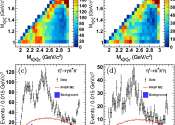Strange Antihyperparticle Created
(PhysOrg.com) -- Physicists, including nine from UC Davis, working at the U.S. Department of Energy's Brookhaven National Laboratory recently created some strange matter not seen since just after the Big Bang -- an "antihypertriton" ...








